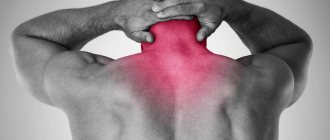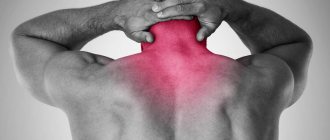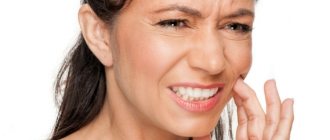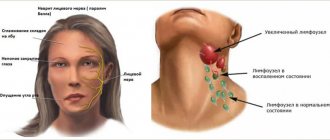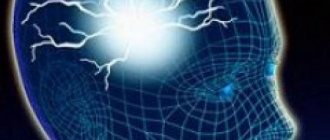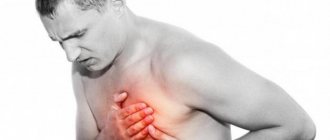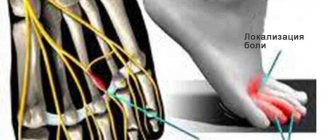Causes of postherpetic neuralgia
In medicine, it is generally accepted that postherpetic neuralgia occurs as a result of an inflammatory process in the nerve ganglia and peripheral nerves. Inflammation is caused by a multiplying virus. The interaction and reasonable balance between pain and anti-pain systems in the body is disrupted, the mechanism of control over the excitability of pain neurons in the central nervous system suffers.
However, neuralgia does not complicate all cases of herpes zoster. Risk factors for its development are considered:
- elderly age. According to statistics, the incidence of postherpetic neuralgia in people over 60 years of age is 50%, that is, every second case ends painfully for the patient. While in the age group from 30 to 50 years, this complication occurs with a frequency of 10%. After 75 years, the disease affects 75% of patients. The numbers speak for themselves. Presumably, the main role in this is played by the ability to regenerate (that is, heal), quickly eliminate the inflammatory process in young people and reduce immunity in old age;
- location of the rash. Postherpetic neuralgia often develops when the rash is localized on the torso;
- massiveness of rashes. The larger the affected area, the more likely the development of neuralgia. Indirectly, this may be due to a low immune response, the body’s inability to localize the lesion to one or two ganglia;
- severity of pain in the acute period (during the appearance of the rash). The stronger the pain during this period, the higher the likelihood of developing postherpetic neuralgia;
- time to start taking antiherpetic drugs that block the replication of the virus. The later specific treatment is started, the higher the likelihood of complications developing.
Separately from this list, it is worth noting the more frequent occurrence of postherpetic neuralgia in females, which has no explanation yet.
What happens to the body during illness
PHN has a viral form. After chickenpox, the virus remains in the body in a dormant form; it is localized in the horns of the spinal cord, cranial nerves and nerve ganglia.
In any convenient case for the disease, the virus can be reactivated, and the patient can feel its manifestation in the form of burning and pain. Such symptoms are caused by an inflammatory process in the ganglia and periphery of nerve cells.
Postherpetic trigeminal neuralgia may not appear for decades, and then affect the body within a few days. Without proper treatment, it can bother the patient for about 12 months.
Initially, its symptoms may not appear in full force, for long periods of time with mild pain with burning sensations, so it is very important to listen to your body and monitor the state of the immune system.
Symptoms of the main forms of the disease postherpetic neuralgia
Varieties
Varieties of shingles have the most common symptoms.
Gangliocutaneous is characterized by a sharp onset and very intense pain. Only on the fourth day of illness the patient notices the appearance of a skin rash. Sometimes the pain becomes extremely intense and unbearable for patients.
The eye and ear are characterized by the presence of rashes. When the trigeminal nerve is involved in the pathological process, very severe pain is observed. Viral keratitis often develops.
Necrotic (or gangrenous) is characterized by deep herpetic lesions of the skin. It often leaves deep and ugly scars on the skin. Occurs in patients with weakened immune systems.
Meningoencephalitic is characterized by the most malignant course and a high risk of death. Meningoencephalitic complications are characterized by the following symptoms:
- movement coordination disorder;
- inability to perform any voluntary movements on the affected side of the body);
- hallucinations of varying nature and severity;
- stiffness of the neck muscles (which then leads to the inability to passively flex the head);
- intolerance to bright light and harsh sounds;
- muscle disorders;
- development of a coma.
Generalized is characterized by the appearance of multiple foci of rash in various parts of the body. Most often, the disease develops in patients with severe immunodeficiency.
The main feature of the abortive form is that the rash disappears very quickly, and vesicles do not form. The duration of this disease is several days.
ethnoscience
For Giardia in children, treatment with folk remedies gives good results. Their big advantage lies in the fact that they do not harm the child’s body, so deworming with their help will take place without side effects.
To prepare the drink, you need to take 5 cucumbers, chop them and pour 1 liter of boiling water. Let the product brew and put it in the refrigerator. Give the child the infusion throughout the day.
Cucumber infusion will help against giardiasis
You need to take 1 tsp. herbs, pour a glass of boiling water over it, place in a water bath and simmer over low heat for 15 minutes. Then let the liquid cool and filter it through a strainer. Take 0.5 tsp. every 3 hours. The drug is contraindicated for children who have problems with the kidneys and stomach.
A decoction of lumbago should be taken every 3 hours
Linden ash
To prepare it, you need to stock up on linden branches. Next, they need to be burned in a metal basin. The ashes should not contain lumps, so they should be sifted. Next you need to take 1 tbsp. l. ash and divide this amount into 7 parts. Give to the child morning and evening. So that the baby does not refuse such a natural medicine, it can be sweetened with honey.
Linden ash can be taken by children from 10 years of age
Aspen decoction
Prepare the product as follows: 1 tbsp. l. leaves or aspen bark is poured with a glass of boiling water, put on fire and boil for at least an hour. After the broth has cooled, it must be strained and stored in the refrigerator. To remove Giardia, you need to drink 1 tbsp. l. infusion three times a day.
Aspen decoction will help get rid of Giardia
Remove the pulp from the nut and divide it into 3 parts. Every day for three days in a row, take one of them, grate it and consume it on an empty stomach.
Coconut is an excellent remedy against Giardia in the liver
Saussurea infusion
For the drink you need to pour 1 tbsp. l. herbs with a glass of boiling water. Infuse the liquid for 3 hours. Give the child 1 tbsp. l. three times a day.
Saussurea infusion should be taken three times a day.
Herbal collection
To prepare an antihelminthic drink, you need to take immortelle flowers, elecampane, mint and cinquefoil in equal proportions. You need to add 2 tbsp. l. collection in a thermos and pour 500 ml of hot water. Leave for 8 hours, after which you can drink 0.5 tbsp. l. 3-4 times a day. The course of treatment will be 30-60 days.
Herbs do not have a toxic effect on the body
Fennel
Pour fennel seeds with warm water in a ratio of 1:2. Let it brew for 24 hours, then drain the water and pour boiling water over the raw material. As soon as the mixture has cooled down, drink 120-150 ml before breakfast, lunch and dinner. The duration of therapy is 20 days.
Fennel is a safe remedy for helminthiasis
Pumpkin seeds
This is one of the most effective means with which you can treat various parasitic diseases. They have also found their use against Giardia. To prepare an anthelmintic herbal medicine, you need to take 100 g of raw material, grind it into powder and add a small amount of water. After this, you need to add honey to the mixture. Take the pulp in the morning on an empty stomach.
Pumpkin seeds are a traditional way to get rid of worms
Symptoms
Herpetic neuralgia is understood primarily as prolonged pain, which causes discomfort to the patient after the underlying disease has passed. Herpes neuralgia can be short-lived - from 3-4 weeks or vice versa - up to several years.
Pain after shingles can vary in nature. Highlight:
- Constant. The patient experiences pressing and dull discomfort, turning into itching.
- Periodic. It manifests itself as sharp shooting, tingling and resembles low-level electric shocks.
- Allodynic. Such pain occurs with minimal irritation, which can be caused by a light touch.
In some patients, all types appear at once.
Unpleasant sensations spread throughout the entire nerve fiber that happens to be at the site of inflammation. In addition to discomfort, other symptoms may appear in the affected area.
These manifestations of the disease include the following:
- temporary loss of sensation;
- itching;
- stabbing pain, sensation of a foreign body in the affected area.
In addition to painful manifestations, there is a decline in physical strength, a constant feeling of fatigue, lack of appetite and subsequent loss of body weight, constant mental anxiety, and fear of society.
From all these complications it is clear that this leads to a noticeable decrease in the patient’s standard of living. Therefore, it is necessary to cure this condition as quickly as possible. For this purpose, special medications are used.
Prevention methods
The following agents can be used as a preventive measure:
- Vaccination against chickenpox - this method will avoid infection with chickenpox and reduce the risk of developing postherpetic neuralgia.
- At the first manifestations of herpes zoster, antiviral drugs should be used, and although the zoster will still appear, in the future this method will help avoid the development of postherpetic neuralgia.
- There is a special vaccine that effectively works against herpes zoster, but it is prescribed mainly to older people - they are the ones who are most susceptible to this virus and can subsequently develop postherpetic neuralgia.
An important factor is physical activity: in the presence of constant load on all muscle groups, ligaments and joints, the likelihood of developing herpes zoster is significantly reduced, and therefore the risk of postherpetic neuralgia becomes lower.
Complications
This disease, in fact, is nothing more than a complication of herpes zoster. But this does not mean that it itself is not dangerous to humans. All the complications that can arise in patients with postherpetic neuralgia are especially difficult for older people to bear.
The consequences themselves are as follows:
- a constant feeling of fatigue in the absence of adequate reasons for it;
- sleep disorders: insomnia or increased sleepiness, feeling “groggy” in the morning;
- weight loss;
- difficulty concentrating;
- depression;
- loss of interest in what is happening around.
Pinched nerve in the cervical spine
A pinched nerve in the cervical spine can be caused by injury or hypothermia.
Read here about occipital neuralgia.
You can find out the symptoms and causes of glossopharyngeal nerve neuralgia here.
In addition, a constant feeling of pain inevitably leads to pronounced neuroses, and this can greatly affect the well-being of the patient, especially the elderly. Therefore, timely treatment of the problem is the best way out of the situation.
Previous: What is a pinched nerve in the lower back
Next article: Description of a pinched nerve in the leg
With a long course of the disease, especially if it is accompanied by very severe pain, patients often experience the following complications:
- depression;
- fatigue;
- sleep disorders;
- loss of appetite;
- difficulty concentrating.
Causes
Almost every person knows what chickenpox is. Moreover, many were infected with chickenpox in childhood. The earlier in age a person became infected, the easier the body fought the disease. And since herpes lives in every person, remaining in dormant mode, all his life, at the slightest provocation, for example, when the immune system decreases, it comes out of dormant mode and becomes active. This is why shingles (herpes zoster) appears.
Herpes zoster is essentially a recurrent chickenpox virus. After herpes zoster has worsened, postherpetic neuralgia (PHN) may manifest itself. When rashes occur, nerve endings are damaged. Because of this scarification, intercostal neuralgia occurs; it is so called because of the specificity of herpetic rashes with herpes zoster along the ribs.
In the field of scientific medicine, it is believed that the occurrence of postherpetic neuralgia is incited by an inflammatory process, both in the ganglia, that is, in clusters of nerve cells, and in the peripheral nervous system, that is, outside the brain and spinal cord.
There are many causes of this disease in both children and adults. The most common risk factors are:
- Chickenpox is an infectious disease. It can be transmitted both by airborne droplets and directly through household contact.
- Age – the older the person, the more likely the risk of virus activation in the body is present.
- Location of the rash - the localization of the rash on the body makes it possible to develop herpetic neuralgia.
- Pain syndrome - severity in the acute stage of the onset of rashes. The more severe the pain associated with herpes zoster, the more likely it is to develop pgn.
- Low immunity – cacogenesis (powerlessness) of the body to localize the affected area with a small number of ganglia.
- Low blocking of virus reproduction – untimely specific treatment with antiherpetic drugs.
- Often, irritating the infected area with your hands, in an attempt to restrain the itching, exposes the infected body to the formation of pain.
1 Herpes zoster on the anterior ribs
2 Herpes zoster spreads across the chest
3Herpetic lesion of the back with Zoster virus
4 Herpes zoster runs along the ribs on the side of the body
Experts believe that inflammation of the nerve ganglia and peripheral roots contributes to pain. It is provoked by the active reproduction of the herpes zoster virus, which causes chickenpox, or chickenpox. An imbalance arises between pain and analgesic systems, and the mechanism that controls the excitability of CNS neurons is disrupted.
The risk group includes older people. The occurrence of neuralgia occurs in half of people over 60 years of age, every second case of herpes zoster ends in the development of neuralgia, in young people this figure does not exceed 10%.
Timely antiviral therapy prevents the appearance of neuralgia.
Diagnostic features
After receiving complete information about the disease, the clinic specialist will prescribe treatment.
Drug treatment or physical therapy in a large number of cases reduces symptoms and restores normalcy. But only if you consult a doctor in a timely manner. Diagnosis of herpetic neuralgia is not difficult. Diagnostic measures are at a minimum:
- visual examination of the patient;
- laboratory examination of biological materials - urine and blood.
To exclude suspicion of other pathologies, in some cases the doctor additionally prescribes:
- Ultrasound of the abdominal cavity;
- X-ray examination of the spinal column;
- ECG.
After making an accurate diagnosis, the doctor prescribes drug therapy, which is carried out on an outpatient basis.
It must be remembered that to prescribe treatment, you need to consult only a doctor; you cannot self-medicate. All therapeutic measures are prescribed individually, depending on the degree and location of the lesion, the patient’s age and his medical history.
Antiviral drugs are the main means of treating herpetic neuralgia
Treatment is complex:
- The main means for the treatment of herpetic neuralgia are antiviral drugs - Acyclovir, it is prescribed up to 5 times a day. Valaciclovir and Ganciclovir have the greatest therapeutic effect; they are combination drugs and are taken 500 mg three times a day.
- Antidepressants are prescribed to reduce irritability and sensitivity. These drugs help reduce pain by suppressing the patient's perception of pain. It is recommended to take only as prescribed by a doctor, especially in older people. One such drug is Amitriptyline.
- To treat the trigeminal nerve, antiepileptic drugs are used - Gabapentin or Carbamazepine. They are well tolerated by patients, even in old age.
- Pain-relieving ointments and patches with lidocaine are prescribed locally. A possible allergic reaction must be taken into account.
- If the pain is severe and does not go away for a long time, opioid analgesics are used - Methadone or Morphine.
In some cases, your doctor may prescribe hormone therapy. Additionally, physiotherapeutic treatment and massage are recommended. These procedures have not only a therapeutic, but also a healing effect for the entire body.
In any case, the result of treatment directly depends on when it was started. The earlier the patient began taking antiviral drugs, the more positive the treatment prognosis.
Postherpetic trigeminal neuralgia is a dangerous disease that occurs after herpes zoster or chickenpox. It is characterized by the fact that when there are no external manifestations of the infectious process, but the pain and burning continues, precisely in those places where there were previously rashes.
The thing is that during the inflammatory process, the tissues become very vulnerable, and irritation occurs suddenly, therefore, painful sensations are observed almost constantly. It is almost impossible to cope with this disease without competent medical care.
Complex treatment is selected purely individually, after diagnostics, laboratory tests, and study of the history of the disease. It is important to distinguish it from all other types of neuralgia. To get rid of severe, excruciating pain, surgery is often required.
Postherpetic neuralgia is the most common complication of herpes zoster. The chickenpox virus and lichen provokes damage to the nervous system and pathological changes in this area. As a result, the chemical composition of substances released into the spinal cord begins to change. This can cause long-term pain.
There are several factors that increase the likelihood of postherpetic herpes zoster neuralgia, which include:
- elderly age;
- weakened immune system;
- severe rashes;
- soreness of the skin before the rash appears.
The presence of chickenpox, which is quite dangerous due to its complications, especially for an adult, can be considered a predisposing factor. The disease can also occur as a result of untimely treatment of a herpetic rash.
In order to properly treat postherpetic neuralgia, when the first signs of the disease occur, you need to contact a neurologist or neuropathologist for a comprehensive diagnosis. The doctor initially conducts a visual examination, as a result of which the affected area is determined. After collecting anamnesis, additional laboratory and instrumental diagnostics are prescribed. The main types of research conducted include:
- blood tests;
- research of the neuropsychic area;
- analysis to detect the herpes virus in the body;
- tomography, ultrasound.
The research results allow us to obtain the most accurate picture of the course of the disease. In addition, this allows you to determine exactly how treatment should be carried out.
For many patients, the symptoms of the disease disappear within just a few weeks after its onset. However, in some individual cases, unpleasant symptoms can persist for several years or even a lifetime.
The disease itself does not pose a threat to human life and health, however, it causes a lot of inconvenience. Throughout the entire period of the disease, it does not progress and there is no deterioration in well-being. But it is worth noting that the patient’s quality of life deteriorates.
Compared to other diseases, postherpetic neuralgia can be predicted even before the onset of development. The main sign of the imminent manifestation of the disease is that you have just had shingles. In this case, it is necessary to prevent the development of herpetic neuralgia by all possible means. There are many versions for this, but the main thing is that this requires a serious approach.
Let's consider some options for preventing the disease, after which drug treatment may not be required:
- For prevention, the main task is to ensure that the body’s immune system is at its best. To do this, it is imperative to lead a healthy lifestyle; maintain a nutritious diet; prevent colds; avoid stressful situations; be physically active.
- You can also use traditional methods of prevention. Some of the most common are compresses made from wormwood or geranium; propolis and beeswax ointment; infusion of garlic oil.
You need to understand that postherpetic neuralgia is a rather painful disease; it is better to try to prevent it than to treat it, especially since it is much more difficult to treat. Well, with such serious neuralgic consequences, in no case should you self-medicate; it is better to let your attending physician do this.
Treatment of the disease
Postherpetic neuralgia has characteristic symptoms that cannot be confused with anything else. Externally, you can see a blistering rash on a certain segment of the body - it could be the face, torso, or limbs.
Pain with herpes varies in nature. There are three types of neuralgia:
- constant pain - dull or pressing, with clear localization;
- intermittent pain - stabbing or shooting in nature, then appears and then disappears;
- allodynic pain is acute, but disappears almost immediately after its appearance.
During postherpetic neuralgia there are several phases. Symptoms vary depending on the stage of the disease:
- Acute phase - pain during skin manifestations. Moreover, it occurs even before the appearance of rashes. This phase continues until the rash disappears. The pain is intense and occurs under the influence of any irritant.
- Subacute phase - after the rash disappears. Lasts for three months. The pain becomes constant, dull or singing.
- Actually postherpetic neuralgia. We can talk about it if pain persists for more than four months after suffering from herpes. It is characterized by the three types of sensations listed above. The pain may persist for several years.
Symptoms
The pathology is manifested by constant pain, most often pressing and dull. It is often accompanied by a burning sensation. Periodic pain can take the form of tingling or shooting.
Allodynic syndrome is spontaneous in nature. A burning sensation appears in response to any touch, which is explained by an inadequate reaction of the spinal nerve roots to the stimulus. The patient is in a restless state. Severe pain is caused by wearing clothes.
Pain impulses spread along the irritated nerve endings, that is, they arise where the herpetic rash was widespread. Skin itching, numbness, and paresthesia may occur.
The long-term intense nature of herpetic neuralgia contributes to the appearance of mental disorders. Their symptoms include:
- asthenia;
- headache;
- emotional instability;
- frequent mood changes;
- decreased concentration;
- deterioration of intellectual abilities;
- absent-mindedness.
Headache is a symptom of postherpetic neuralgia.
The patient is emotionally unstable. In old age, pain is perceived more acutely, and signs of mental disorders are more pronounced.
Traditional treatment of postherpetic neuralgia
The statistics of Internet requests is an amazing thing, and this request - “folk treatment for postherpetic neuralgia” resembles the request “folk remedies for the treatment of Pneumocystis pneumonia in HIV-infected drug addicts in Kievan Rus.”
About folk remedies
Folk remedies and traditional medicine dealt with common conditions: colds, pneumonia, poisoning, biliary and renal colic, wounds, blood loss and other diseases. For the more rare ones, there were not only adequate traditional medicines, but not even names.
Thus, postherpetic neuralgia is a complication of herpetic neuralgia, which itself is much less common than usual intercostal neuralgia. So, on average, only one patient out of 200-300 diagnosed with intercostal neuralgia has a chance to suffer from the postherpetic form. After reading this article, which says that at the slightest appearance of blistering rashes and burning on the skin along the intercostal space, you need to urgently contact a neurologist, infectious disease specialist and prescribe urgent antiviral treatment, antibiotics, etc. - and this chance is reduced to almost zero.
Ineffectiveness of traditional methods of treatment
Thus, there is NO alternative treatment for postherpetic neuralgia. Even drug treatment in advanced cases is an extremely difficult and thankless task. In developed countries, postherpetic neuralgia is an indication for the prescription of opioids, narcotic analgesics.
Therefore, all lotions, lubricants, sentences have no therapeutic effect. This must be remembered if neuralgia occurs with blistering rashes on the skin. The only thing that can be advised is to eat properly during this disease.
The main forms of the disease postherpetic neuralgia
postherpetic neuralgia on the right side of the head
These are the main forms of herpes zoster.
- Gangliocutaneous is the most common. It is characterized by severe pain, so most often in the outpatient chart we will see the diagnosis of postherpetic neuralgia ICD 10.
- Eye and ear. They are distinguished by damage to the gasser node and rashes on the auricle.
- Necrotic. It occurs in weakened patients.
- Shingles, which occurs when the autonomic ganglia are affected. It is characterized by the appearance of uncharacteristic symptoms - for example, diarrhea, constipation, difficulty urinating, etc.
- Meningoencephalitic. This is a fairly rare form of the disease. Unfortunately, it is dangerous because it has a very high risk of death.
- Disseminated. It is characterized by the formation of a large number of vesicles in various parts of the body.
- Abortive. Vesicles do not form, and the rash quickly disappears.
When this therapy is not effective
Postherpetic neuralgia is caused by the herpes virus. Unfortunately, none of the traditional treatment methods described above are able to overcome this pathogen. Therefore, such remedies cannot be placed above doctor’s prescriptions. They should only be used as an adjunctive treatment that can improve sleep, relieve itching, and speed up the healing of skin rashes.
It is impossible to get rid of the disease itself in this way. Therefore, you should definitely visit a doctor, because the duration of the disease can range from several weeks to several months. In addition, it will not be possible to get rid of it once and for all, and attacks can recur quite often.
Diet therapy
For giardiasis in children, not only medications are prescribed. To remove parasites and eliminate the consequences of the disease, it is necessary to make some adjustments to the diet.
The goal of diet therapy for giardiasis in children:
- remove the effects of intoxication;
- enhance the enzymatic activity of the gastrointestinal tract;
- strengthen the immune system;
- prevent the proliferation of Giardia.
Your child can drink compotes, fruit drinks, and fermented milk drinks.
For this purpose, the child’s menu needs to be expanded. Every day he needs to eat cereals, dried fruits, and vegetables. It is important to consider that for Giardia, as for many other parasites, sweets are an ideal habitat. It is difficult for them to exist in an acidic environment, so during therapy, sweets in the form of candies, cakes, and soda should be prohibited. As for sour foods, they should be given preference.
Food processing plays an important role in the nutrition of a sick child. It is best to prepare puree soups and porridges for your baby. Vegetables can be baked or served fresh, or juiced from them. Products that will improve intestinal motility include baked pumpkin and apples.
During the treatment of giardiasis, you will need to take enterosorbents and antihistamines. Vitamin therapy is a mandatory measure that will help restore the baby’s body after an illness.
Causes of postherpetic neuralgia
Postherpetic neuralgia is the most common complication of herpes zoster. It is not known why shingles sometimes causes postherpetic neuralgia, but a rash that is difficult to treat may be a risk factor.
The varicella zoster virus (the causative agent of chickenpox and shingles) causes nerve damage and a disproportion of large and small fibers in the damaged nerves. Because of this, the chemical composition of substances released into the spinal cord and into higher-order connections with the brain changes. As a response, the brain can change the order in which it processes the signals it receives, which it then sends to the damaged nerves. This can cause long-lasting pain.
The following risk factors are known to increase the likelihood of postherpetic neuralgia:
- age – the disease is more common in people over 60;
- weakened immunity (the body's defense system);
- severe rash with herpes zoster;
- pain in the skin area before the rash appears.
You may also be at increased risk for postherpetic neuralgia if you had shingles on your chest or affected nerves in your face during a previous illness.
Routes of infection
Giardia is a protozoan parasite that, penetrating the human body, settles in its intestines.
The disease is diagnosed in people of any age, but children 3-4 years old are especially susceptible to it. Infection usually occurs due to neglect of personal hygiene rules. Children often come into contact with peers, so they can become infected with giardiasis at school or preschool, or on the playground. The source of invasion can be domestic and farm animals.
Transmission of parasites occurs through the fecal-oral route. Giardia enters the body through dirty hands, contaminated water, unwashed vegetables and fruits. In the environment, Giardia resistantly withstands the influence of unfavorable factors. They can survive in water for about 3 months, in soil - up to 20 days.
Giardiasis is one of the very common parasitic infections.
Treatment of the disease
Postherpetic neuralgia can be treated, but the effectiveness of treatment largely depends on how promptly you consult a doctor and begin the correct treatment. Experience shows that if during the first three days after the first signs of the disease were detected, medication was prescribed and treatment was started, then the risk of postherpetic neuralgia will be minimal.
Typically, postherpetic neuralgia is treated at home. But you won’t be able to eliminate the pain yourself with conventional painkillers; even injections give a very short-term effect. This type of neuralgia is treated with completely different, very serious drugs that can only be prescribed by a doctor. In particular, such drugs include: anticonvulsants, tricyclic antidepressants and even narcotic analgesics.
Each stage of the disease has its own specific treatment. It must begin as early as possible for the results to be effective.
Postherpetic neuralgia is especially difficult to treat in older people. This is explained by the fact that all prescribed drugs have many side effects (this is written in detail in the instructions for use of these drugs), which occur in older people.
Particular care must be taken when treating this type of neuralgia in pregnant women and nursing mothers due to the presence of side effects from prescribed medications. Treatment of this group of patients should be under the joint supervision of the treating neurologist, gynecologist and pediatrician
Drug treatment
At the acute and subacute stages of the disease, when there are skin rashes, Acyclovir tablets for oral administration are prescribed, as well as Acyclovir ointment for treating areas of skin affected by rashes.
Acyclovir is active against herpes simplex virus types 1 and 2, as well as herpes zoster virus (Varicella zoster). Acyclovir blocks the active reproduction and spread of skin rashes, promotes faster formation of crusts and reduces the risk of skin complications. Acyclovir also reduces pain.
Tebantin is prescribed from the group of anticonvulsants. It has not only anticonvulsant, but also analgesic and neuroprotective effects. At the same time, it is also an antidepressant.
From the group of tricyclic antidepressants, it is customary to prescribe Amitriptyline and Nortriptyline. These drugs are prescribed to patients who develop mental disorders due to the underlying disease. Elderly people are usually prescribed Nortriptyline, as it is better tolerated.
When the rash disappears from the skin, lidocaine patches are prescribed. Lidocaine has a local cooling and analgesic effect. Other pain-relieving creams and ointments, including non-steroidal anti-inflammatory drugs, are also prescribed.
In cases where the condition is very advanced and drug treatment is ineffective, blockade of the nerve affected by the disease, spinal cord stimulation, acupuncture, physiotherapy, electrical stimulation and other procedures are performed.
Folk remedies
Folk remedies are not an independent method of treatment for complications of herpes, lichen and chickenpox. They can be used as an adjunct to drug therapy.
Good results are obtained from pain-relieving rubs prepared according to folk recipes, for example:
- juice from black radish;
- ointment prepared with propolis and beeswax;
- garlic oil.
To treat affected areas of the skin, decoctions of medicinal herbs and fir oil are used.
Before you start using folk remedies, you should consult your doctor, since the disease is serious and self-medication can lead to unexpectedly bad results.
Maintaining body tone
To generally maintain the tone of the body at all stages of the development of the disease, it is very useful to carry out water procedures in the form of a shower. A shower relieves muscle tension, relaxes and calms the nervous system, which somewhat alleviates the patient’s suffering.
Effective folk remedies
- Coconut pulp. It should be taken at least an hour before meals. Grated coconut can become the basis of a salad if you season it with lemon or lime juice. After all, an acidic environment is detrimental to Giardia. Coconut meals should be continued for a week, and after two weeks the treatment should be repeated.
- Cucumber water. Infuse overripe cucumbers (half a kilogram) in a liter of boiling water. Give the resulting liquid to drink throughout the day instead of regular water.
- Honey plantain. Prepare a mixture of honey and plantain leaves. To do this, you will need leaves collected exclusively during the flowering period of the plantain. They need to be passed through a meat grinder and mixed in equal parts with honey. Store the mixture in the refrigerator and give the child a teaspoon three times a day before meals 30-40 minutes. This product is well suited for children over 7 years old, provided that the child is not allergic to bee products.
- Garlic milk. Squeeze a couple of cloves of garlic (an excellent antiparasitic agent) into a glass of boiled and slightly cooled milk. The drink should be given to children aged 6 years and older 4 times a day, a quarter of a glass, an hour before meals. The course of treatment with this milk is until complete recovery, which can be confirmed by doctors by analyzing stool for Giardia cysts. Milk with garlic does not have an excellent taste, and therefore it is not surprising if the baby refuses to drink it. If you can’t persuade, you can find another effective remedy for treating Giardia.
- Bearberry infusion. Brew a tablespoon of dry raw materials (the collection can be bought at any pharmacy or from herbalists) with a glass of boiling water, let it brew for about 6 hours, and then let the child drink the resulting infusion in three doses. Repeat treatment every two days until recovery.
- Tubazh with unpeeled oats. Brew 100 grams of oats in a thermos in the evening before bed, and give it to your child to drink in the morning immediately after waking up, without getting out of bed. Then apply a heating pad to the baby's right side and turn him onto his left side. Carry out the procedure for at least 15 minutes for two weeks. If the tubage is carried out successfully and correctly, then after two to three hours the child will have loose stools. There is no need to give any antidiarrheal drugs with it.
- Flax seeds. Mix flax seeds with cloves (ten parts flax and one part cloves). Cook in boiling water for at least half an hour. To correctly dose the resulting decoction, you will need to divide the baby’s weight by 3. The result obtained will be the number of grams of flax seed decoction. The product should be taken 2-3 times a day for 10-14 days.
READ MORE: Dysarthria in children - types, symptoms and exercises for treatment
- Sour berries and fruits. During treatment, give your child sour berries and fruits every day without sprinkling them with sugar (currants, viburnum, cherries, cranberries, lemon, grapefruit, kiwi, blackberries, green apples). Such “snacks” can be arranged between main meals. As mentioned above, lamblia reacts very poorly to acids, so the treatment of giardiasis will be significantly accelerated.
- Pumpkin seeds. This is a powerful antiparasitic agent given to us by nature itself. Peel 100 grams of seeds and mix with honey. Give the mixture to the child on an empty stomach.
- Tincture of wormwood. Freshly cut grass or dried collection should be poured with boiling water and left for two days. A glass of water will require a tablespoon of raw materials. Let your child drink the resulting infusion several times a day, 15 minutes before meals.
- Bergamot oil. You can buy the oil at the pharmacy and drop 1-2 drops onto a cube of refined sugar. This sweet “medicine” should be given to the child in the morning on an empty stomach.
- Horseradish. The rhizomes of this plant are very good at helping to cope with any intestinal parasites. To prepare the drink, you will need three horseradish roots and a liter of boiled and cooled water. Grind the horseradish and put it in water. The drug must be infused for at least two days, after which the drink can be given to the child one tablespoon before each meal on an empty stomach.
Symptoms
Herpetic neuralgia can have different localization and symptoms characteristic of the affected area. Herpetic trigeminal neuralgia occurs unexpectedly and has no initial symptoms. Over several hours, the pain increases and is accompanied by fever. Over the next 2-3 days, the clinical picture looks like this:
- severe headaches, throbbing from the affected side;
- intense sharp pain on the face, similar to an electric shock, of unclear localization;
- All joints and muscles ache from pain, the person becomes weaker and experiences severe malaise;
- there is a significant increase in temperature.
Many people take these signs for a banal ARVI and begin to be treated with antiviral drugs. After a few days, a burning sensation appears in the area of the trigeminal nerve and additional symptoms of the disease appear:
- the headache on the face becomes stronger, the person cannot tolerate it;
- the skin on the forehead, temples and behind the ears begins to itch very much;
- significant swelling spreads on the affected half of the face;
- the mucous membranes become covered with rashes with blisters, which can merge into larger plaques.
The active rash continues for 7-14 days, then crusts appear, the blisters burst and dry out, then fall off.
Manifestations of postherpetic neuralgia of the trigeminal nerve
If we are talking about herpetic intercostal neuralgia, the symptoms increase gradually and look somewhat different:
- First, a burning and itching sensation appears on the skin of the chest in the area of the ribs. Many people feel numbness in the skin around the ribs. This indicates the location of the affected nerve.
- Severe pain appears between the ribs, which becomes more intense with sudden movement, palpation, or sudden muscle contraction (coughing, sneezing). Hypothermia can cause burning, throbbing pain in the shoulder.
- A herpetic rash appears in the rib area, which looks like blisters with liquid. The rash spreads quickly, causes swelling, inflammation of the skin and pain becomes more intense.
- After a few days, the blisters dry out, crust over and fall off.
Skin rash is a characteristic symptom of herpetic intercostal neuralgia
As the clinical picture of the disease develops, other symptoms are added:
- the patient feels weak and suffers from headaches;
- irritability and a constant feeling of fatigue appear;
- blood pressure may increase;
- sleep is disturbed;
- the patient loses appetite;
- body temperature rises;
- Heart pain may occur.
The affected nerve fibers can manifest themselves with pain of varying intensity for a long time, even several years. Herpetic neuralgia is a serious disease that can provoke the development of serious complications:
- pathologies of the central nervous system;
- encephalitic meningitis;
- neurosis;
- postherpetic neuralgia or neuropathy.
Therefore, if the slightest sign of a herpes infection appears, you should consult a doctor.
Tubazh
Tubage is a procedure that can be prescribed for giardiasis. This method of cleansing the liver and gallbladder should be done early in the morning. The best time is from 5 to 7 am. The essence of the procedure is as follows: the child needs to be given 0.5-1 glasses of heated mineral water. It is important that the baby does not get out of bed. After half an hour, he needs to drink one of the following:
- honey drink To prepare it, you need to dissolve 1 tbsp in 200 ml of warm water. l. natural honey;
- warm grape or apple juice;
- radish juice mixed with olive or sunflower oil (1 tsp per 3 tbsp liquid).
The liver and gallbladder are cleansed using tubage
Tubage is a procedure that is performed for severe forms of the disease. It is aimed at cleansing the liver, intestines and gallbladder. It is carried out in accordance with the instructions:
- After getting up, without getting out of bed, you need to drink 250-300 ml of warm mineral water without gas. Additionally, it is recommended to take several tablets of activated carbon. To carry out the procedure you need to wake up around 6-7 am.
- After 30 minutes you need to drink 200 ml of grape or apple juice. You need to stay in bed all this time.
- Place a warm heating pad in the liver area, cover with a blanket and remain in a horizontal position for two hours.
- After getting up, sit down several times, jump, take 5-10 deep breaths. In half an hour you can have breakfast.
READ MORE: Severe dizziness: causes
After some time, the stomach will empty. The procedure should be carried out several times a week. They help improve the flow of bile and create conditions in the body under which parasites cannot exist. The tubing technique should be discussed with your doctor and make sure there are no contraindications.
At-risk groups
Neuralgia does not develop in every case of infection with cutaneous herpes. Factors that provoke the appearance of neuralgic pain are:
- older age of patients;
- decreased immune defense of the body;
- localization of rashes.
With age, immunity to the virus in people who have had chickenpox weakens. This explains the fact that postherpetic neuralgia in the vast majority of cases is observed in people over 65 years of age.
The fundamental factor is immunity. Immunodeficiency provokes pain.
Pain syndrome can occur at any age when the vesicular rash is localized in the face, head and thoracic spine.
According to statistics, postherpetic neuralgia (PHN) is more common in women.
Immunostimulants and physiotherapy in the treatment of lichen
Painkillers for herpes zoster do not always allow you to quickly get rid of neuralgia. In order for the body to recover faster from the Zoster virus, patients are advised to take antiviral medications at the very beginning of the disease, as well as take drugs that help improve immunity. During the rehabilitation period, patients who have had herpes zoster need to undergo a course of physiotherapy and massage.
Antiviral agents
Early use of antiherpetic medications will help reduce the intensity of pain after herpes on the body. For shingles, it is recommended to take:
- Acyclovir.
- Valaciclovir.
- Farmvir.
Antiviral drugs will not necessarily cure intercostal neuralgia in a short time. But taking these medications will stop the spread of the virus throughout the body, which means it will alleviate the patient’s general condition and reduce the intensity of discomfort.
Immunostimulating drugs
The lower a person’s immunity, the greater the likelihood of developing neuralgia after shingles. Therefore, treatment of Zoster virus also includes taking immunostimulants.
Your doctor may prescribe the following medications for shingles:
- Arpetol.
- Kagocel.
- Lycopid.
The use of immunostimulants during the treatment of Zoster virus and later helps to avoid further relapses of the disease. Complex treatment helps reduce pain both during herpes zoster and during the period of postherpetic neuralgia. Immunomodulators provide acceleration of the process of epithalization of herpetic eruptions and regression of pain.
Physiotherapy
Dry heat helps some patients relieve pain in the nerve ganglia due to the herpes virus: paraffin, mustard plasters, sand or salt in a bag, an electric heating pad. The heating element should not be excessively hot; it is possible to warm the surface affected by neuralgia for a short period of time.
Physiotherapy is also actively used for herpes zoster during the rehabilitation period. For postherpetic neuralgia, patients are prescribed the following procedures:
- Transcranial electroanalgesia.
- Ultrasound therapy.
- Diadynamic therapy.
- Fluctuarization.
- Magnetotherapy.
- Laser therapy.
- Acupuncture.
Massage helps eliminate skin numbness and a feeling of tightness after herpes zoster. It also helps you relax and unwind. They usually massage the back and chest, starting the massage from the healthy side and gradually moving to the affected surface. The area susceptible to postherpetic neuralgia is not massaged intensively, slowly, stopping the effect when discomfort occurs.
Sometimes patients experience discomfort even with minimal exposure to the skin. In this case, it is recommended to use pain-relieving gels and ointments during massage.
The danger of self-medication
Giardiasis perfectly masks some serious diseases of the intestines, stomach and duodenum. It often causes allergic reactions of various localizations - runny nose, dermatosis, dermatitis and even bronchial asthma.
Lyabmlia are quite insidious because, while in the intestines, they regularly stick and detach from the mucous membrane, thereby injuring it. Various pathogenic microbes thrive in such affected areas. A sick baby gradually develops dysbacteriosis.
READ MORE: Infectious mononucleosis in children - symptoms, treatment, consequences
The metabolic products of Giardia are quite toxic; they literally poison the child, although they do it slowly. These harmful substances, among other things, disrupt metabolism: the sick person has a worse absorption of carbohydrates, vitamins, microelements, proteins and fats.
Folk remedies for the treatment of giardiasis in children are quite good and effective, easy to prepare and accessible to everyone.
Other treatments
Treatment is supplemented with physical therapy, which can speed up the restoration of the integrity of the affected nerve. Typically, doctors prefer electrophoresis with painkillers or UHF. A good result is achieved when the treatment is supplemented with massage.
Electrical stimulation of the spinal cord roots is often recommended to reduce the severity of pain.
For severe pain that negatively affects the patient’s mental health, drug blockade is indicated. The method is based on the injection of an analgesic directly into the area around the affected nerve.
What's happened
Postherpetic neuralgia (neuralgia after herpes zoster, ICD-10 code - B02.2) is a pain syndrome that develops as a result of the complicated course of Herpes zoster and occurs in the projection zone of nerves damaged by the virus.
Shingles develops when the herpes virus type 3, which persists for life in the nerve cells of a person who has had a pathology such as chickenpox or chickenpox, becomes active.
Late neuralgic pain appears in 10-20% of those who have had herpes zoster due to the deep penetration of the virus, partially destroying the nerve fibers. Most often, neuropathy after shingles occurs in older people. People with low immune status are also at risk.
Symptoms of postherpetic neuralgia
With herpes zoster, after the rash disappears, pain may persist for several weeks.
Postherpetic neuralgia is commonly understood as pain that persists after the rash has healed. The pain can be felt by the patient from 3-4 weeks to several years. On average, this type of neuropathic pain lasts about a year.
What is the nature of the pain? It can be of several types:
- constant. The pain is usually dull, pressing, deep in nature with a hint of burning;
- periodic. This type of pain manifests itself as shooting, stabbing, acting like an “electric shock”;
- allodynic. This pain is sudden, burning in nature, which occurs in response to a slight touch, as an inadequate reaction to an external stimulus. For example, touching clothing can cause similar sensations.
One patient may experience all three types of pain simultaneously.
The pain spreads along the affected nerve conductors, that is, it is felt where the rash was localized, although there are no manifestations on the skin.
In addition to pain, other sensory sensations may occur in the affected area, which, however, also cause discomfort. It can be:
- itching;
- numbness;
- tingling, a feeling of crawling, the presence of a foreign body (“some kind of insect is sitting”, “something is stuck”, and so on).
Typically, the affected area is hypersensitive to any touch (although the skin itself may feel numb).
Although the main manifestation of the disease is only pain, it causes changes in other areas of a person’s life, causing him harm. Painful sensations are provoked by:
- decreased physical activity;
- insomnia;
- chronic fatigue;
- loss of appetite and, in connection with this, even body weight;
- a state of anxiety and constant worry, which in some cases ends in depression;
- decrease in social activity.
As we can see, postherpetic neuralgia leads to a decrease in the quality of life of a sick person. Therefore, it is necessary to actively fight it. To do this, they resort to the help of medications.
What are the types of neuralgia?
Types of pain with postherpetic neuralgia are divided into groups:
- periodic – pulsating, sharp, like an electric shock;
- persistent – with a burning sensation, pressing, accompanied by numbness of areas of the skin;
- allodynic – sudden, which appears in response to the touch of clothing or some other “frivolous” irritant and disappears quite quickly.
There are also several phases in the development of neuralgia:
- acute (when there were rashes on the skin);
- subacute (when the skin is cleared of sores), lasting an average of 3 months;
- postherpetic neuralgia itself lasts more than 4 months.
Postherpetic neuralgia has the following stages of development:
- spicy;
- subacute;
- the course of the neuralgia itself.
This type of disease is characterized by various types of pain, which are divided into groups such as:
- periodic;
- stable;
- allodynic.
Periodic pain is characterized by the fact that it occurs suddenly, like an electric shock, but does not last long. Sustained pain provokes a burning sensation, pressure and is accompanied by numbness in certain areas of the skin. Allodynic pain is sudden and occurs in response to touching clothing. But the irritability passes quickly enough.
Symptoms of postherpetic neuralgia
The main symptom of postherpetic neuralgia is constant pain in the nerves in the place where there were skin manifestations of herpes zoster some time ago. The pain can be described as burning, piercing, shooting, aching or throbbing. Itching may also occur in the affected area, sometimes called postherpetic itch. Other symptoms are described below.
Sensitivity in the area where shingles was previously present may be increased (hyperesthesia) or decreased. If sensation is reduced, you may feel an unpleasant numbness (this is called dysesthesia).
Allodynia is the sensation of pain from something that does not normally cause pain, for example:
- combing;
- dressing;
- warm;
- draft;
- light touch.

